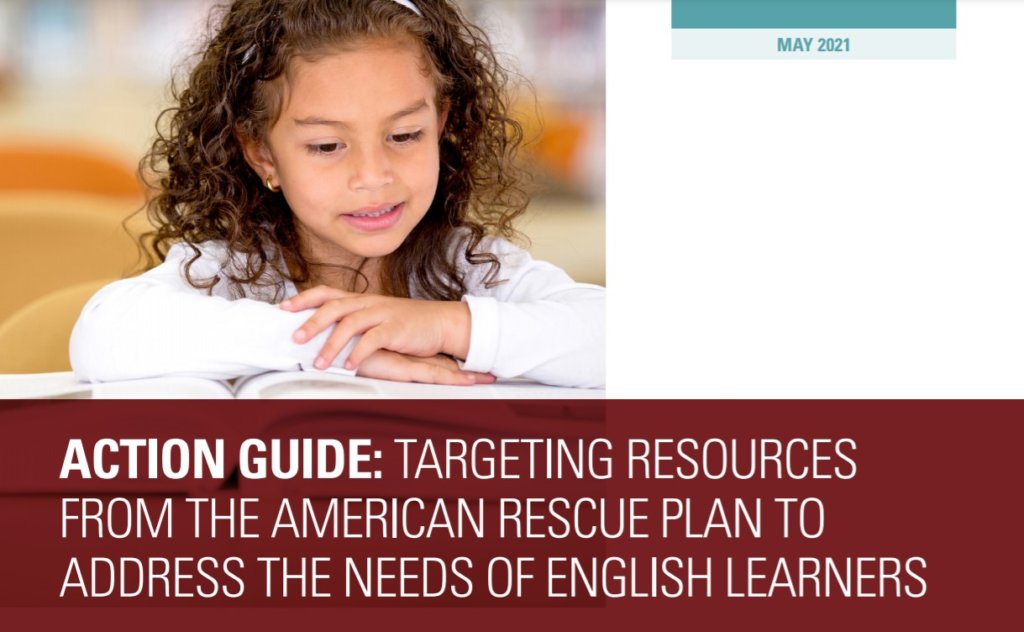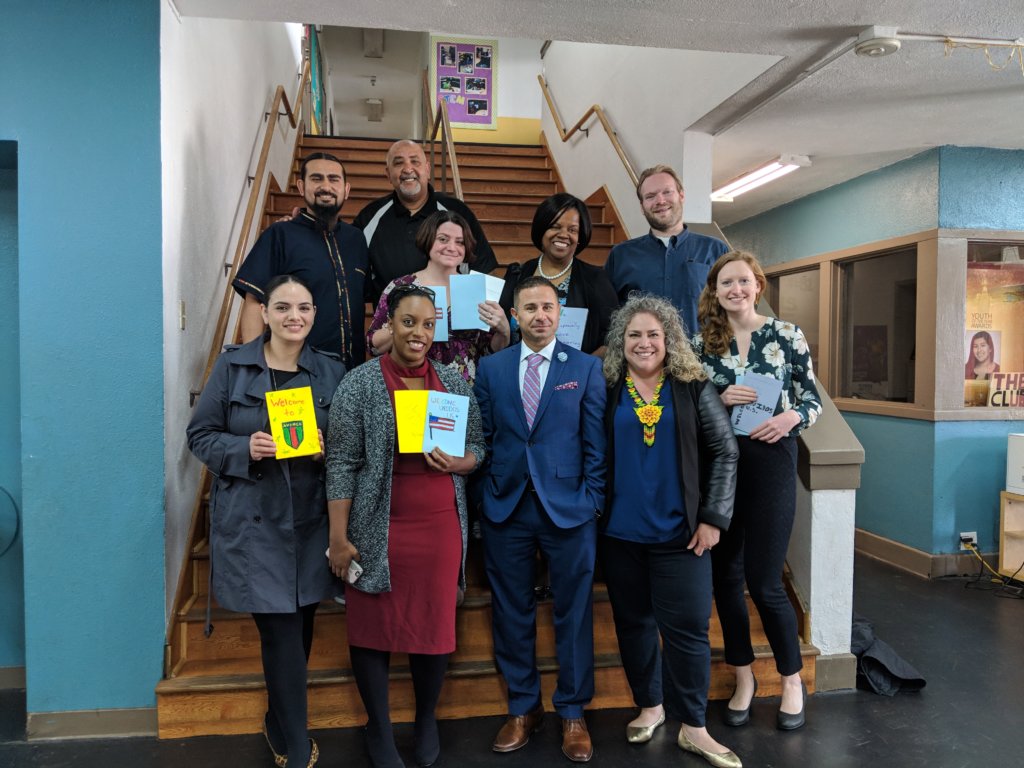Practice to Policy: A Group of Fellows with UnidosUS’s National Institute of Latino School Leaders Draw from their Backgrounds to Improve the Politics of Educational Equity
This winter, just as the U.S. Department of Education was confirming a veteran Latino educator as its next secretary, a group of like-minded and seasoned education fellows of color enrolled in UnidosUS’s National Institute of Latino School Leaders (NILSL) were drawing up policy memos to inform policymakers like him. The NILSL fellows believe their work is important to ensuring the success of Latino students who currently make up one quarter of the nation’s K-12 public school population, and could represent as much as half the student population by 2050. According to the National Assessment Education Progress (NAEP), about 45% of Latino fourthgraders are reading at or below basic levels. But the fellows are well aware that most people in America will need some form of higher education to maintain a competitive stake in the workforce, and that by 2030 Latinos will make up one-third of the working population.
“Raising the educational attainment of Latino students is perhaps the best way to ensure that Hispanic students are prepared to fill the jobs of the future,” noted the introduction to the NILSL policy memo series.
That series, which published earlier this month on the UnidosUS website, includes topics such as strengthening family engagement and language accessibility; improving the identification of English learners (ELs) so as to offer more strategic supports; leveraging partnerships with community-based organizations; improving teacher professional development and transparency with respect to the demographics of hiring and retention; and greater supports for Hispanic-Serving Institutions (HSIs).
Most of their policy asks are related to measures laid out in the Every Student Succeeds Act (ESSA), the latest iteration of federal laws governing equal access to education that were initially developed during the Civil Rights Movement.
Family Engagement, Language Accessibility, and Leveraging of Community Partnerships
One of the most pressing matters, especially during the pandemic, is parent engagement. Like most parents, Latinos want to see their children succeed, but sometimes they face cultural, linguistic, logistical, or technological barriers that make it hard for them to do so. That’s especially challenging for families with at least one immigrant parent, which is the case for about 18 million public school children. To complicate matters even more, 32% of the 26.9 million children living below the poverty line are children of immigrants. Given these conditions and the way the COVID-19 pandemic has disproportionately impacted communities of color, these parents are very likely stressed out, overworked, and struggling to put food on the table, so they can’t be engaged parents without tailored supports.
“Families are the conduit through which support can be provided, but many immigrant families are not properly equipped to support their children through the American education system,” noted NILSL fellows Jordan Harrison, vice president of community impact and partnerships at the educational nonprofit Reality Changers, and Oscar Romano, co-founder and CEO of the assessment technology start-up Ember Within, PBC.
In their policy memo “Engaging Immigrant Families to Student Success,” they propose to tackle this issue with funding shifts and increases. For example, they say an increase from 1% to 3% in Title I funding, which goes to schools where at least 40% of the students are deemed low-income, could contribute tomore innovative, evidence-based parent engagement programs, and about 2% of Title III funds, which are used help ELs attain English proficiency and meet state academic standards, could be earmarked to make parent engagement materials available in languages these families can understand.
“Studies have shown that when the student feels parental support, they perform better in school, their academics go up, they participate in the classroom and in school activities,” the memo noted.
In fact, in a similar policy memo titled “Strengthen Parental Involvement Supports to Ensure Latino Families Can Engage with Schools,” Isaac Cardona, area senior director, Portland Public Schools, and Paul Yumbla, senior team lead, Abraham Lincoln High School, Denver Public Schools, noted that inColorado, where parent engagement programs have been widely implemented, Latinos are now graduating from high school at a rate of 70%.
That effort was reinforced by a second parent engagement memo titled Increase Supports for Parental Engagement to Increase Student Achievement, which proposes changes to Title I. The memo’s co-authors Elizabeth Garcia, a program development coach at Kalamazoo Youth Development Network, Juanita Olivares Franklin, associate director of Hispanic/Latino outreach at Northwest Arkansas Community College, and Maria Paula Zapata, associate director of education programs at Conexión Américas believe that half of the 3% of funds recommended in the other memo should not be used for school-wide initiatives, but rather target the families who most need support. They would also like to see those funds used for research-based staff training and require that print, digital, and other communications materials be available in the top three languages spoken in a school district other than English.
Their memo closed with a reminder that Latino parents place a high value on education and desire more communication and support from their schools. At the same time, their perception of what parental involvement should look like may be different from that of a given school district, and so all of these supports must be developed in a culturally responsive manner.
“The sooner we take action, the sooner Latino families and students can benefit,” the memo stated.
Improving Teacher Training, Creating Accountability in Diversity Hiring and Retention
Building out better, more culturally responsive supports for students and their families is a difficult task without input and modeling from educators who reflect the identities and experiences of those communities.
“Public schools in the United States are more diverse than ever, and these schools need diverse teachers who are able to be culturally responsive to students and their families,” noted the authors of a memo titled “Increasing Teacher Diversity to Increase Student Achievement.”
Marcela Alvarez is a bilingual primary school teacher working with the UnidosUS Affiliate Para Los Niños, and her co-author, Jorge Lopez, is a partner with the educational consulting firm Impact Advisors in the San Francisco Bay Area. They add, “teachers who can do more than empathize, and who can also relate to students and their families, speak the same language, and understand the experience of growing up in an immigrant household will be crucial in keeping students and families engaged.”
For Celia Garcia Alvarado, executive vice president of education at the Cesar Chavez Foundation and Devon Teran, principal at DeLaSalle Charter School, authors of a policy memo titled “Closing the Achievement Gap by Recruiting and Retaining Diverse Educators,” recommend that Title III should require school districts to report teacher racial and ethnic data, and that reporting should include rates of retention. They believe that at least 20% of their ESEA Title III funds should support these diversity efforts.
“Latinos are the fastest-growing student population in the United States, but their race/ethnicity is not mirrored in the diversity of our current teacher workforce,” they noted.
Improving the Identification of and Strategic Supports for ELs
NILSL fellows Sandra Peloquín, an EL teacher at Lorain City Schools in Ohio, and Alma D. Velasquez, principal at Jason Lee Elementary in Portland, Oregon, are working in areas of the country where the Latino and EL population is rapidly growing, and they’re quick to note that their schools don’t usually have a lot of experience addressing the unique learning needs of ELs. Plus, ELs in the schools they’re serving are often come from diverse cultural, linguistic, and economic backgrounds. For example, just because an EL may be coming from a widely Spanish speaking country like Guatemala, does not mean that Spanish is the main language that child speaks at home. If the child is Maya, the home language may very well be an indigenous language. They believe nuances must be taken into account and leveraged to help students utilize all of their language and communications skills for academic performance.
“We believe federal policy should reflect upon current national research on second-language learning and bilingualism to simultaneously develop EL’s language and literacy skills to allow them to engage in the full range of academic content learning,” the memo’s authors stated.
They referenced California’s EL Roadmap as one state example. The program outlines what the authors call “rigorous expectations” for the state’s schools.
“Accordingly, we believe a national model under ESSA could borrow from the state’s best ideas,” they noted.
This could include aligning Title I and Title III grants around evidence-based teaching practices. But they said ESSA should also require states to implement “uniform criteria for identifying monitoring and exiting ELs, using appropriate assessments and advancing the professional development necessary to use the assessment results when exiting students from EL services.”
They also said that ESSA needs to recognize that ELs aren’t a monolithic subgroup, and that districts need to have tools for identifying ELs who are newcomers, long-term ELs students with interrupted formal education, students with disabilities and students who are gifted and talented. They also recommend that the current 5% of Title III funding allocated for teacher training of ELs be doubled.
“Misidentification of students can have different impacts, such as a student being thought to have a learning disability when in fact, they have simply faced consistent instruction,” they warned. They also said over the past 20 years, the vast majority of ELs are actually U.S.-born, and that placing them in classrooms designed for newcomers can post dire consequences to their academic performance and emotional well-being.
Helping Latinos Succeed in Higher Education
The NILSL fellows are hopeful that improving educational policies at the K-12 level can contribute to the later success of Latinos pursuing those higher-ed degrees they’ll need to compete in and contribute to a highly skilled U.S. job market.
Sergio Jara Arroyos, director of alumni strategy and engagement at Teach for America in Los Angeles, and Victor Ruíz, executive director of the educational nonprofit Esperanza Inc. in Cleveland, believe an increase in federal funds for HSIs can help Latinos reach that goal.
“Federal funding has not kept up with the growth of HSI’s,” they stated in their memo, adding that they would like to see that funding increase by $20 million (about a 10% increase) to meet the growing demand.
They also recommend that the government establish transparency measures that can ensure institutions receiving Title V, Section A funding are truly using that money to bolster supports for the students HSIs seek to serve.
In so doing, they hope Latinos will have a better chance of enrolling in and paying for college, and that if they are given the right cultural and logistical supports for their unique needs that they can successfully graduate in a four to six year timeframe.
“While Latinx students’ enrollment continues to increase, limited funding to HSIs risks the Latinx students’ contribution to civic engagement, a strong economy, and our democracy,” they stated.




